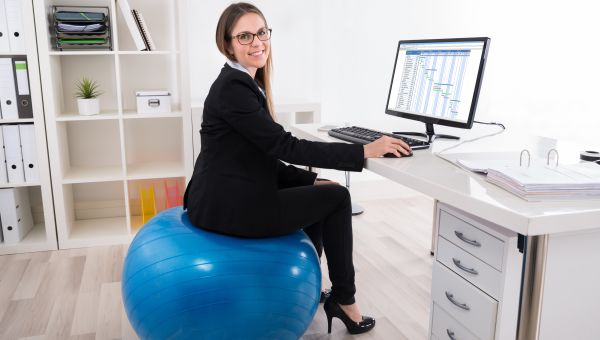7 best moves to fight pain
Learn how your body mechanics can fight pain.

Chronic Pain and Your Posture
Hard to imagine, but the way we sit, stand, sleep, and even text can either aggravate—or improve—our pain. Too often, our multitasking minds prevent us from paying enough attention to our posture and how we move through the day. Not good. It's the little things—from how we get out of bed in the morning and brush our teeth, to the way we sit at our desks and drive our cars—that can add up to big aches. So, dial down your discomfort by adding better biomechanics to your pain-management plan. It certainly can't hurt.

Don't Slouch!
Sitting up straight isn't just good manners, it's also sound advice for fighting pain. If you often catch yourself hunching over in your chair, train yourself to sit tall. Your back and neck will thank you. First, choose a chair with a straight back and good lumbar support. Next, keep your feet shoulder-width apart and firmly planted for better support. If you sit at a computer for long periods, try using a standing work station, or take frequent breaks to stretch and walk around.

Stand Up to Pain
Don't let something as simple as standing up incorrectly make chronic pain worse. Safety tip No. 1: Plant your feet solidly under you and use your leg muscles to lift yourself out of bed, off the couch, or up from a chair. Safety tip No. 2: Listen to your body. If you have knee or back pain when you stand, schedule occupational or physical therapy sessions for safer, pain-free ways to do it. When standing for long periods, wear comfortable, supportive shoes. Distribute your weight equally between both feet, and rest one foot on a low stool. Keep your spine straight, your shoulders back, and your head lifted.

Sleep Pain-Free
For starters, make sure your mattress is on the firm, less-saggy side, and choose sleep positions more likely to bring comfy sleep and pain-free mornings: on your back with a bolster or pillow under your knees, or on your side with your knees slightly bent and a pillow between them. For your neck, choose a pillow that keeps it aligned with the rest of your spine, rather than at a crooked, muscle-stiffening angle.

About Pain and Exercise
Want a healthy dose of your body's natural painkillers? Regular workouts can boost the production of feel-good endorphins, including dopamine. Plus, they can also prevent your muscles from weakening, your joints from stiffening, and extra pounds from taking up residence on your hips, thighs, and midsection—a good thing considering that can make chronic pain worse. Just check with your doc or physical therapist if you're new to exercise or thinking of increasing the type or amount.

Fight Pain at Work
Bad ergonomics—especially when using a computer—can definitely trigger or worsen back pain, neck pain, eye strain, carpal tunnel, and more. Because everyone's body is different, creating an ergonomic workstation requires an individualized setup. One rule that applies to all: Stand up and take a break at least once an hour. Beyond that, make sure the height of your desk, chair, monitor, and keyboard allows you to keep your shoulders relaxed, your spine and wrists straight, your low back supported, and your feet flat on the ground.

Lift with Your Legs
Rule of thumb for less back pain: Don't try to channel Hulk Hogan when hoisting that 50-lb. bag of dog food off the shelf. Use common sense—and your legs, instead. Plus, err on the side of caution when determining how much weight you can safely and comfortably lift. If faced with lifting a particularly heavy load, break it up into lighter loads, use a dolly, or ask for help. Always keep your spine straight and your abs engaged, and let your legs do the lifting whenever moving objects from one place to another.

Take the Pain Out of Driving
Driving a lot is tough on your body. Most car seats shift your weight too high onto your butt, making it impossible to maintain the natural curve of your spine. The result: more back pain, neck pain, and—in some cases—stiff, achy knees. The solution: Get a movable lumbar support and adjust your seat height so your knees remain level with or slightly higher than your hips. Consciously keep the natural arch in your lower back as much as possible. If driving long distances, pull over for frequent stretching breaks to prevent pain from worsening.
More On


video

article

slideshow


video


video
